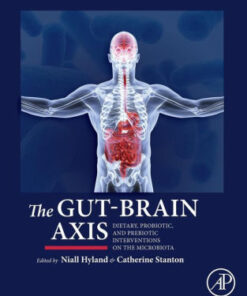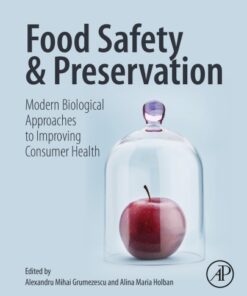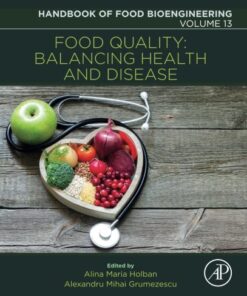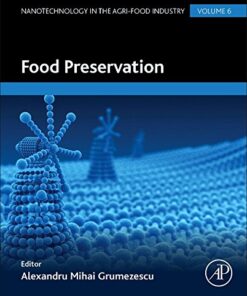(PDF) The Gut-Brain Axis – Dietary, Probiotic, and Prebiotic Interventions by Hyland
$32.00
Download instantly The Gut-Brain Axis – Dietary, Probiotic, and Prebiotic Interventions on the Microbiota by Niall Hyland, Catherine Stanton. It is ebook in PDF format.
ISBN-10: 012802304X ISBN-13: 9780128023044
Preview
This is the PDF eBook version for The Gut-Brain Axis – Dietary, Probiotic, and Prebiotic Interventions on the Microbiota by Niall Hyland, Catherine Stanton
Table of Contents
1. Global and Epidemiological Perspectives on Diet and Mood 2. Targeting the microbiota: Considerations for developing probiotics as functional foods 3. Food- and non-food based strategies for effective delivery of probiotics 4. Bioactive- and non-bioactive food constituents and their influence on the microbiome 5. Correlating the gut microbiome to health and disease 6. The microbiome and aging: Impact on health and wellbeing 7. Importance of the microbiota in early life and influence on future health 8. Utility of microbial genome sequencing in probiotic strain identification: Promises and pitfalls 9. Germ-Free Animals: A Key Tool in Unravelling How the Microbiota Affects Brain and Behavior 10. Sensitivity of the hypothalamic-pituitary-adrenal axis to the gut microbiota: Opportunities for dietary intervention 11. A neuroactive microbiome 12. The influence of diet and the gut microbiota in schizophrenia 13. Influence of the microbiota on the development and function of “the second brain” – the enteric nervous system 14. Dietary inventions and brain-gut disorders 15. Altering the gut microbiome for cognitive benefit? 16. The role of the microbiota in neurodevelopmental disorders 17. The role of the microbiota and potential for dietary intervention in chronic fatigue syndrome 18. Potential for pre – and probiotics in managing psychological symptoms associated with alcohol-dependence 19. Where next for dietary intetventions and the brain-gut axis? 20. Perspectives on targeting the microbiome in developing global populations 21. Regulatory considerations for the use and marketing of probiotics and functional foods 22. Microbiota and Metabolism







